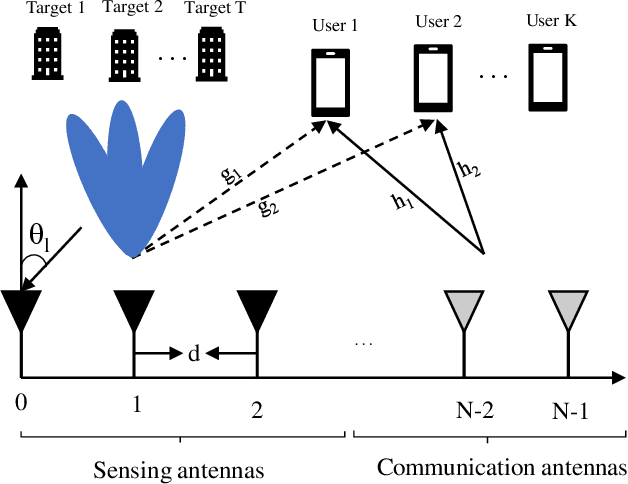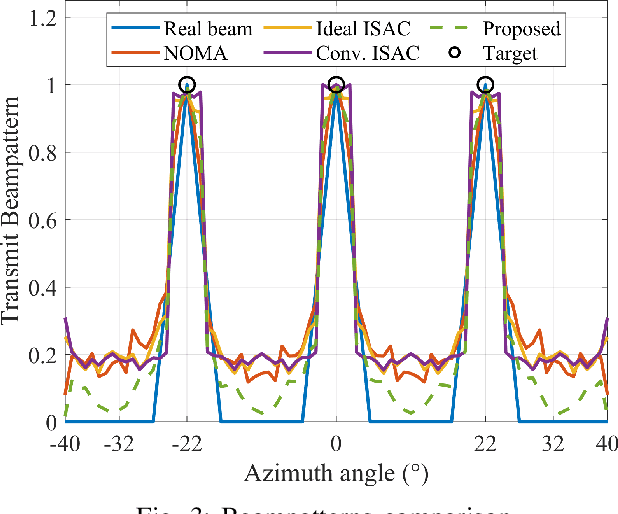Interference Reduction Design for Improved Multitarget Detection in ISAC Systems
Paper and Code
Apr 08, 2024



The advancement of wireless communication systems toward 5G and beyond is spurred by the demand for high data rates, exceedingly dependable low-latency communication, and extensive connectivity that aligns with sensing requisites such as advanced high-resolution sensing and target detection. Consequently, embedding sensing into communication has gained considerable attention. In this work, we propose an alternative approach for optimizing integrated sensing and communication (ISAC) waveform for target detection by concurrently maximizing the power of the communication signal at an intended user and minimizing the multi-user and sensing interference. We formulate the problem as a non-disciplined convex programming (NDCP) optimization and we use a distribution-based approach for interference cancellation. Precisely, we establish the distribution of the communication signal and the multi-user communication interference received by the intended user, and thereafter, we establish that the sensing interference can be distributed as a centralized Chi-squared if the sensing covariance matrix is idempotent. We design such a matrix based on the symmetrical idempotent property. Additionally, we propose a disciplined convex programming (DCP) form of the problem, and using successive convex approximation (SCA), we show that the solutions can reach a stable waveform for efficient target detection. Furthermore, we compare the proposed waveform with state of the art radar-communication waveform designs and demonstrate its superior performance by computer simulations.
 Add to Chrome
Add to Chrome Add to Firefox
Add to Firefox Add to Edge
Add to Edge